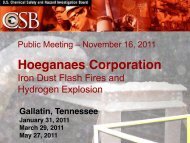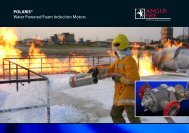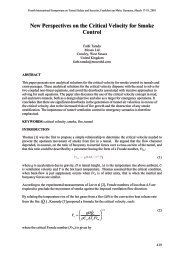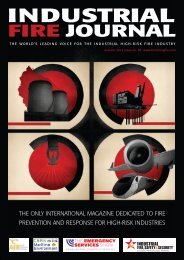Gas cooling.pdf - Industrial Fire Journal
Gas cooling.pdf - Industrial Fire Journal
Gas cooling.pdf - Industrial Fire Journal
You also want an ePaper? Increase the reach of your titles
YUMPU automatically turns print PDFs into web optimized ePapers that Google loves.
fire environment in<br />
appropriate under all circumstances! <strong>Fire</strong>fighters who work to<br />
become masters of their craft recognise that strategies, tactics,<br />
and techniques must fit the problems presented by the incident.<br />
<strong>Gas</strong> Cooling is the application of an appropriate amount of<br />
water fog into the upper layer to reduce the temperature of the<br />
gases.<br />
Vapourisation of water in the upper layer reduces the<br />
temperature of the hot gases, thermal load on the firefighters<br />
working below, and potential for ignition. While this sounds simple<br />
and fairly intuitive, this basic technique to control upper layer<br />
hazards is frequently misunderstood.<br />
Many firefighters in the United States believe that application of<br />
water into the upper layer in a fog or spray pattern will result in<br />
production of a large amount of steam which will fill the<br />
compartment and make conditions untenable. In many cases this<br />
is consistent with firefighters’ fireground experience. These<br />
firefighters are sceptical of <strong>cooling</strong> the upper layer with the<br />
application of water fog to improve conditions. The answer can be<br />
found in a statement made by Floyd Nelson (1989, “In principle,<br />
Ed Hartin, MS, EFO,<br />
MI<strong>Fire</strong>E, CFO<br />
serves as <strong>Fire</strong> Chief<br />
with Central<br />
Whidbey Island <strong>Fire</strong><br />
& Rescue in<br />
Washington (USA),<br />
and is the owner of<br />
CFBT-US, LLC.<br />
Ed was co-author<br />
of 3D <strong>Fire</strong>fighting:<br />
Techniques, Tips,<br />
and Tactics, and he<br />
delivers practical<br />
fire dynamics<br />
training<br />
internationally and<br />
across the US.<br />
Figure 2:<br />
short pulse.<br />
<strong>Fire</strong> control tactics<br />
It is essential to understand the interrelationship between<br />
ventilation strategies such as tactical ventilation (removal of<br />
smoke and introduction of air) and tactical anti-ventilation<br />
(confinement and exclusion of air) and fire control.<br />
It is fair to say that amongst fire services in the US offensive<br />
firefighting involves aggressive use of tactical ventilation and direct<br />
attack with high flow hoselines. In other parts of the world such as<br />
Europe and Australia, use of tactical ventilation is limited or highly<br />
controlled, and flow rates from hoselines are lower than those<br />
typically used in the US.<br />
While tactics vary, firefighters have often been taught not to put<br />
water on smoke. These cautions were based on the need to put<br />
water onto burning fuel for an effective direct attack and to limit<br />
production of steam which could add to the upper layer and<br />
worsen conditions for firefighters working at floor level. However,<br />
what happens when the fire is shielded from direct attack?<br />
<strong>Fire</strong>fighters must advance their hoseline to the seat of the fire,<br />
while working underneath the flammable upper layer. In a<br />
ventilation controlled regime, the air introduced when the<br />
firefighters made entry for fire attack can result in increased heat<br />
release rate and rapid fire progression. How can this hazard be<br />
mitigated?<br />
<strong>Gas</strong> <strong>cooling</strong> as a fire control technique<br />
First a qualifier, there are no universal solutions to control the<br />
hazards presented by a compartment fire. <strong>Fire</strong>fighters are often<br />
presented with ideas such as positive pressure ventilation (PPV),<br />
compressed air foam systems (CAFS), high pressure or ultra high<br />
pressure water fog, and gas <strong>cooling</strong>. and see these technologies<br />
or tactics as the solution. No one tactic or technique is<br />
Figure 3: heating<br />
and <strong>cooling</strong><br />
curves of smoke<br />
and water.<br />
Read our e-magazine at www.hemmingfire.com FOURTH QUARTER 2010 ❘ FIRE & RESCUE ❘ 47


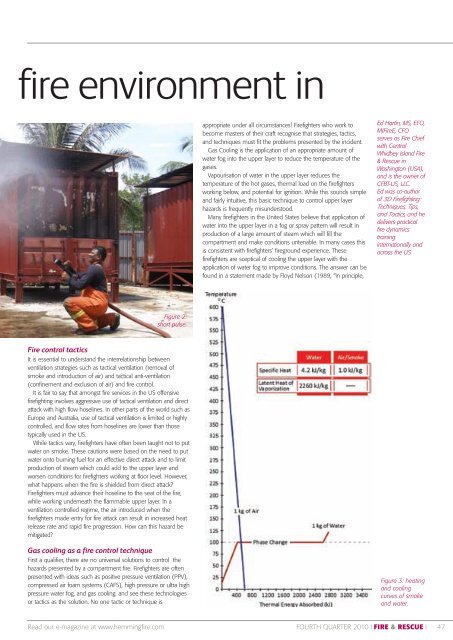
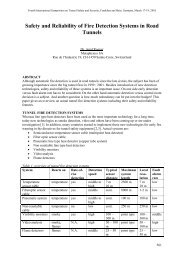
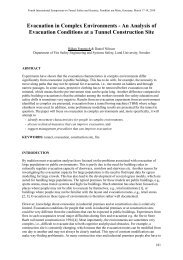

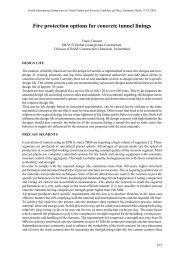
![30-37 TunnelsREV[1]rev.qxd - Industrial Fire Journal](https://img.yumpu.com/22237435/1/184x260/30-37-tunnelsrev1revqxd-industrial-fire-journal.jpg?quality=85)
